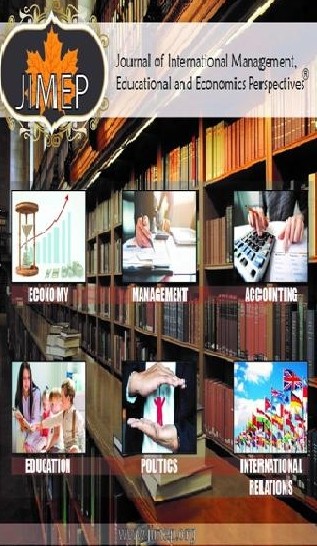GELİŞMEKTE OLAN EKONOMİLERDE REEL DÖVİZ KURU VE DIŞ TİCARET HADLERİ İLİŞKİSİ: 2000-2016 ÖRNEĞİ
Reel Döviz Duru, Dış Ticaret Hadleri, Gelişmekte Olan Ekonomiler, Panel Veri
AMPIRIC APPLICATION FOR THE RELATIONSHIP BETWEEN REAL EXCHANGE EXCHANGE AND FOREIGN TRADE ROLLS IN DEVELOPING COUNTRIES
Real Exchange Rate, Terms of Trade, Panel Data Analysis,
___
- Breusch, T. S. ve Pagan, A. R. (1980). The Lagrange Multiplier Test and itsApplications to Model Specification in Econometrics. The Review of EconomicStudies(47-1), 239-253.
- Coudert, V., Couharde, C. ve Mignon, V. (2008). Do Terms of Trade Drive RealExchange Rates? Comparing Oil and Commodity Currencies. Centre d'EtudesProspectives et d'Informations Internationales (CEPII)(32), 4-64.
- Coudert, V., Couharde, C. ve Mignon, V. (2014). On the Impact of Oil Price Volatilityon The Real Exchange Rate – Terms of Trade Nexus: Revisiting CommodityCurrencies. Centre d'Etudes Prospectives et d'Informations Internationales(CEPII), Paris, 1-23.
- Drine, I. ve Rault, C. (2003). On the Long-run Determinants of Real Exchange Rates forDeveloping Countries: Evidence from Africa, Latin America and Asia. WilliamDavidson Institute Working Paper, 1-29.
- Emirmahmutoglu, F. ve Köse, N. (2011). Testing for Granger causality inheterogeneous mixed panels. Economic Modelling 28.3, 870-876.
- Neary, P. (1988). Determinants of the Equilibrium Real Exchange Rate. The AmericanEconomic Review,78(1) , 210-215.
- Pesaran, M. H. (2004). General diagnostic tests for cross section dependence in panels.CESifo Working Paper(1229), 1-40.
- Pesaran, M. H. (2007). A simple panel unit root test in the presence of cross‐sectiondependence. Journal of applied econometrics, 22(2), 265-312.
- Pesaran, M. H. ve Yamagata, T. (2008). Testing slope homogeneity in large panels.Journal of Econometrics, 142(1), 50-93.
- Rahutami, A. I. (2012). Real Exchange Rate Volatility and International Trade:ASEANExperience towards ASEAN Economic Community Seminar and DiscussionPaper. 1-15. Nijmegen, Hollanda: Nijmegen School of Management RadboudUniversity.
- Westerlund, J. (2007). Testing for Error Correction in Panel Data. Oxford Bulletin ofEconomics and Statistics 69(6), 709-748.
- Başlangıç: 2013
- Yayıncı: Ahmet GÜVEN
SÜRDÜRÜLEBİLİR KALKINMA VE YEŞİL BÜYÜME ARASINDAKİ İLİŞKİ
TÜRKİYE’DE YEREL YÖNETİMLERDE PERFORMANS DENETİMİ VE HUKUKİ ALTYAPISI
TÜRKİYE’DE KAMU KESİMİNİN EĞİTİM HARCAMALARININ DEĞERLENDİRİLMESİ
Hayrettin TÜLEYKAN, Mehmet Ali PARLAK
TÜRKİYE’ DE SOSYAL BELEDİYECİLİĞİN UYGULANMASINI ZORLAŞTIRAN NEDENLER
GELİŞMEKTE OLAN EKONOMİLERDE REEL DÖVİZ KURU VE DIŞ TİCARET HADLERİ İLİŞKİSİ: 2000-2016 ÖRNEĞİ
MALİYE POLİTİKASI ARACI OLARAK VERGİ TEŞVİKİ VE HIZLANDIRILMIŞ AMORTİSMAN YÖNTEMİ: BİR FİRMA ÖRNEĞİ
